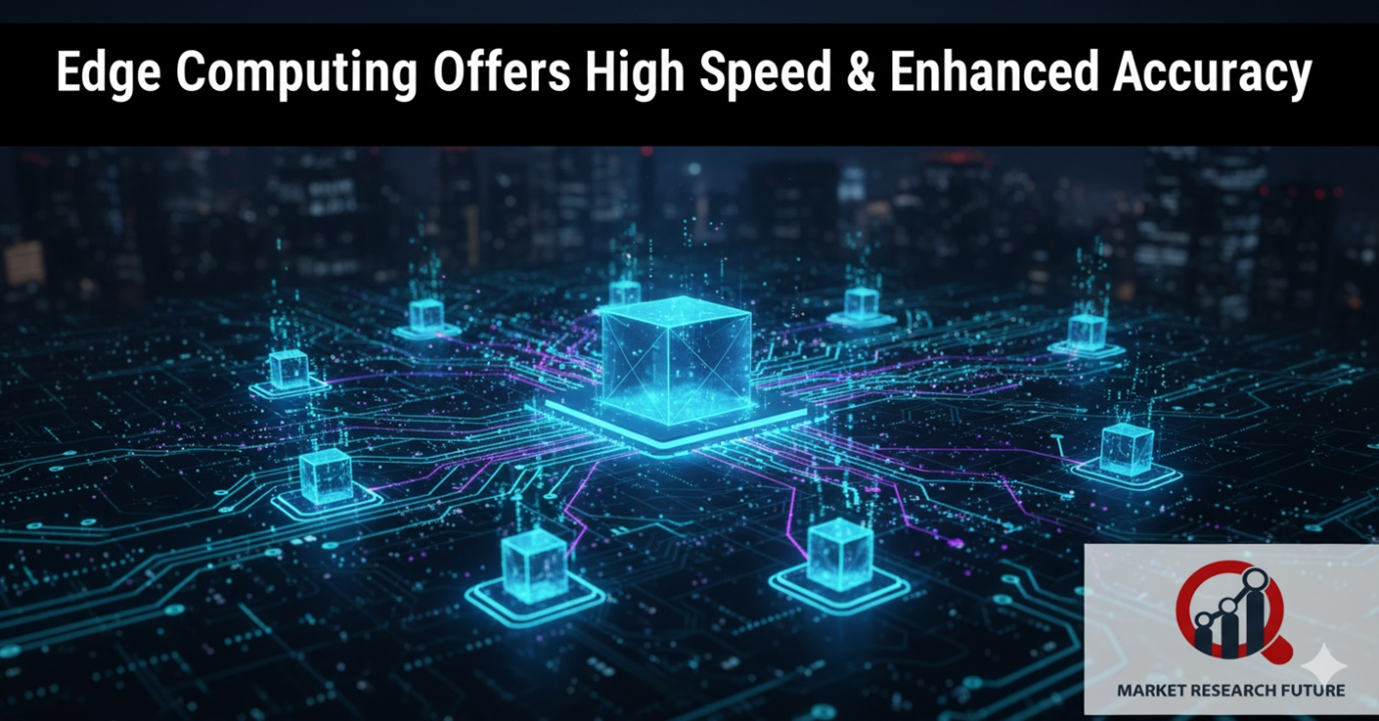An Overview of the Edge Computing Market and Its Benefits

Edge computing is a technique that gets data processing closer to where the data comes from instead of depending on servers or cloud networks that are far away. It works like a conversation in person: when people talk to one another directly, they get answers faster, more clearly, and more effectively. Edge computing is like that direct connection, making sure there is more bandwidth and faster response times.
How Does Edge Computing Work?
In traditional systems, devices send data over the internet to centralized servers, where it is processed. This causes delays and traffic jams when there is a lot of use. Edge computing fixes this problem by letting devices handle information where it is created, at the “edge.”
Fingerprint or face recognition systems are used in modern offices to keep track of when people come and go. Edge-enabled devices handle the data right away instead of waiting for cloud servers to check it. If needed, they can store backups in the cloud later. This cuts down on latency, saves time, and gives you results right away.
Edge Computing in Real Life
Most of us don't even know that we utilize edge computing every day. It has become such a part of everyday life that life feels incomplete without it.
Mobile Edge Computing ensures that real-time communication, location monitoring, and app replies are all fluid on smartphones.
Self-driving cars use edge computing to quickly evaluate input from sensors, road signs, and safety systems.
Healthcare: Hospitals are using edge systems more and more to store and analyze patient scans and reports on-site, which speeds up diagnosis and treatment.
Edge solutions are used by the oil and gas industry to keep an eye on conditions in real time, even in places with bad connectivity.
Benefits of Edge Computing: Faster speeds and no lag
Delays can cause huge problems in fields where every second counts. Edge computing makes sure that data is analyzed right away and that responses are sent right away, which keeps operations quick and effective.
Better Safety
The possibility of interception goes up when data flows back and forth to cloud servers all the time. Edge computing helps with this by storing and processing sensitive data on-site, which gives organizations more control over their privacy and makes them less likely to be hacked.
Cost-effectiveness
To handle a lot of data with standard servers, you need a lot of expensive bandwidth and infrastructure. Edge computing sends less data to the cloud, which lowers the expenses of storing and transferring data and makes things run more smoothly.
The Most Beneficial Edge Computing
Sectors that need real-time information the most benefit the most. Edge technologies are already being used in manufacturing, transportation, healthcare, retail, and energy to make operations run more smoothly, make things safer, and make customers happier. The move to 5G networks has made edge computing much more powerful, opening up even more chances for new ideas.
Edge Computing vs. Cloud Computing
Cloud computing is still the core part of digital infrastructure, but edge computing makes it faster and more accurate.
The device processes data in real time.
There are a lot fewer delays when data is sent.
Sending only the most important information to the cloud keeps bandwidth costs down.
Cloud and edge technologies work well together, although edge computing is better for activities that need quick answers.
The Rise of Edge Computing
Edge computing is not just a passing fad; it is now built into many industries across the world. By putting computing power closer to the source, it is changing how organizations gather, analyze, and use data. It can do anything from making personal devices better to changing whole industries around the world.
Edge computing gives people and organizations speed, security, and efficiency in a world where data drives every choice. It makes technology more sensitive to people's demands, opens the possibility to smarter developments, and decreases reliance on servers that are far away. Edge computing is becoming a key part of the digital future as industries keep changing.